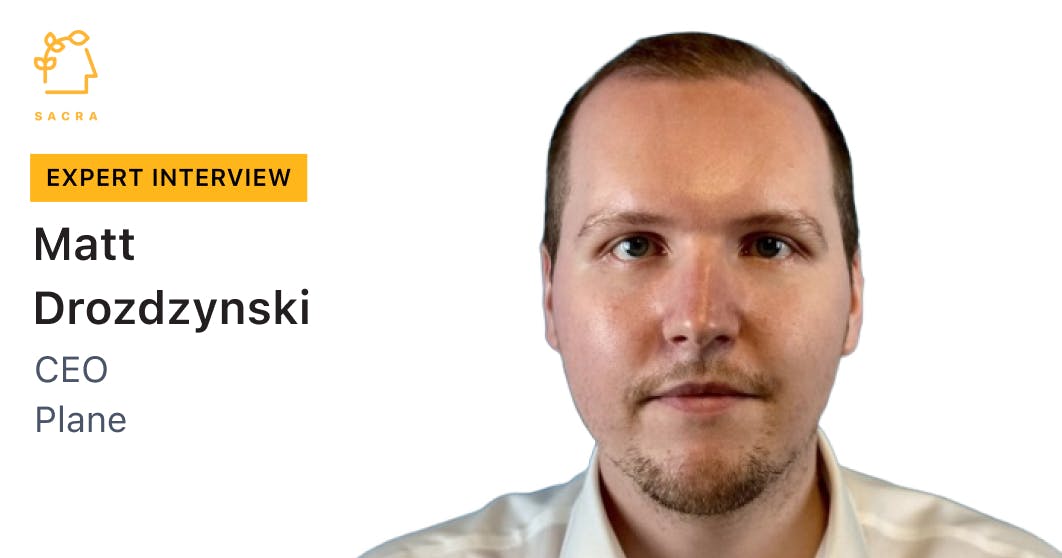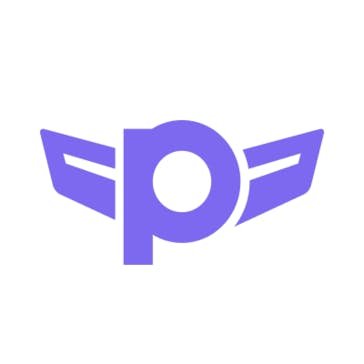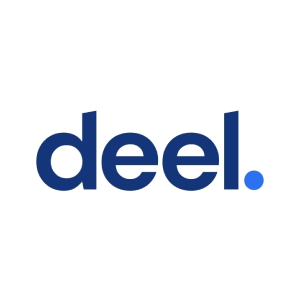Matt Drozdzynski, CEO and co-founder of Plane, on global payroll post-COVID
 Jan-Erik Asplund
Jan-Erik Asplund

Background
Matt Drozdzynski is the CEO and co-founder of Plane. We talked to Matt about the competition around contractor payroll between companies like Rippling, Gusto, Brex, Plane and others, the rise of geographically-specific payroll platforms like Ontop for Latin America, and the future of remote-first payroll platforms as companies start to move back to in-person and hybrid setups from full remote.
Questions
- COVID was a massive tailwind for remote and international hiring. Can you talk about the state of that tailwind today post-COVID and what's propelling the growth of companies like Plane?
- Global hiring has reduced the opportunity for geographical labor arbitrage and the cost of skilled labor has gone up globally. Is that a headwind or tailwind for Plane and how do you see the market for global labor evolving over the next 5 years?
- How has the current tech recession and the rise of AI impacted Plane, especially given headcount reductions and dramatic slowdown in hiring? Is that offset by an increased rate of offshoring?
- Can you run us through Plane’s business model? Per seat SaaS, plus FX, commission re benefits, interchange, other? What's the revenue mix look like?
- Can you run us through the operations side of the business? How do you think about team size and what should be done with software vs with ops? What needs to happen operationally to launch in a new country?
- Global payroll companies offer the ability to abstract away geographical boundaries and the challenge of being compliant with local law across many many localities. How does this promise play out in reality and how might it differ between different global payroll providers based on their model?
- Can you talk about the different flavors of EOR and how Plane approaches it? How does the customer experience differ based on who is operating the EOR? How is consistency maintained in EOR in terms of service quality?
- Do customers tend to use Plane for both global and domestic payroll, or will they pair a domestic solution like Gusto or Rippling with a global payroll provider like Plane or Deel? Why or why not?
- What is the threat, if any, that comes from domestic solutions like Rippling and Gusto in offering global payroll solutions? Ultimately do you see a convergence for global and domestic or are there some meaningful fault lines where it would make sense to have specialization in one verses the other?
- What do you make of geographically specialized global payroll solutions like Ontop for LatAm? Is there any advantage of depth of locality specific experience / knowledge around compliance, hiring or contractor / employee portal?
- Contractor payroll abstracts away the distinctions between employment status and the challenge of compliance based on employment status, enabling users to pay contractors, freelancers and vendors through a payroll experience rather than make individual payments through wires, for some, project-based invoices for others and bill pay. Can you walk us through the world of contractor payments (especially international) pre-Plane, what it looks like today, and where you think it's headed re consolidation or continued fragmentation of payroll, freelancer payments and bill pay?
- Do you see yourself competing with companies like Bill.com or Brex when it comes to vendor pay or expense management?
- Plane has not launched a contractor / employee wallet like Gusto and Deel Wallet that offers financial services to the payees on the platform. Have you made a conscious decision not to do that or do you intend to do that farther down the line? How do you think about the opportunity?
- If everything goes right for Plane, what does it look like in five years?
Interview
COVID was a massive tailwind for remote and international hiring. Can you talk about the state of that tailwind today post-COVID and what's propelling the growth of companies like Plane?
Remote and global hiring was obviously a thing before COVID, but COVID massively accelerated its adoption.
I was, however, the first one to tell people that not every company was going to go remote as a result of COVID, because I've run distributed teams and remote companies all my life—it's a lot of work and it's really hard.
We're now seeing a pullback, to an extent, from remote work. I don't think that should be a surprise to anyone, because remote work is not for everyone. It requires a lot of effort for the company and for the individuals involved to make it work.
To me, it’s always been about flexibility, and being able to choose whatever model’s right for you, your company, and your stage.
Personally, I think we're going to be successful as a business if companies can no longer use, “Oh, you're in another country,” as an excuse. It's about reducing friction and making sure that companies can make the right choices for their business, and that's where we're settling down.
Ultimately, at scale, every company becomes a remote company to an extent. Once you're a global company, you have to have a lot of the same infrastructure that's needed for you to be truly distributed and have people work from home, and work in different countries around the world.
Global hiring has reduced the opportunity for geographical labor arbitrage and the cost of skilled labor has gone up globally. Is that a headwind or tailwind for Plane and how do you see the market for global labor evolving over the next 5 years?
I don't think it's an either or in that sense. We never wanted to capitalize on companies hiring internationally because it's cheaper—it's always about being able to hire the best person for the job wherever they happen to be. We just wanted location not to be a factor.
Rates equalizing across different markets brings us closer to that vision where you're paid for the work that you're doing and the value that you're creating, and it's not based on where physically in the world you are. So purely from the mission perspective, that's great.
In practical terms, there’s going to be a subset of companies that all things considered, will prefer to work with folks in the same building or the same geography instead of internationally. I don't see that as a problem for our business, because we're not international only.
Our goal is to have your entire team on Plane, and if that mix ends up shifting sort of more international, less international, you just want to have that flexibility in your people operations tool to be able to make these adjustments as you go and not have it be like, “Oh, now I don't need global payroll.” It's never going to be, “Oh, now I'll hire exclusively in the US.”
How has the current tech recession and the rise of AI impacted Plane, especially given headcount reductions and dramatic slowdown in hiring? Is that offset by an increased rate of offshoring?
Companies reducing headcount is obviously a short-term headwind, and there's no denying that. Everyone building a people/HR/SaaS tool tied to the number of employees that a company has at it will see that.
The hope is that if your tool is as essential as payroll, your rate of growth and expansion with your customers has merely slowed down as opposed to actually going to zero—because payroll is essential. As long as your business is a going concern, you'll need a payroll tool. You might have fewer people at the current point in time, but things will ultimately bounce back, and if you're a successful business, you'll continue to grow.
For us, it's about helping our customers through this process and making sure that they're successful as a company, because we want them to be our customers for the long run. And if that means sacrificing some short-term revenue that we otherwise would have, but our customers by making these changes in their workforces are able to continue to survive and thrive, then I see that as a good thing. We're helping them navigate this as much as we can.
In terms of labor, I'm not particularly worried about AI. There are types of jobs that are obviously at risk, but there are other jobs that are going to be created in their place. Some AI companies employ literally tens of thousands of people for data labeling, model training, so it's just work that gets shifted into other areas of our economy. I'm not an economist by any means, but my view on this is that we're just reallocating people and effort into different areas, ultimately.
The main difference between AI and crypto is that with AI, we're seeing actual applications creating value for people from day one. With crypto, that was always a little bit hazy whether we were actually going to see that translate into value being created. So that said, a good VC hype train is always a VC hype train, whether it's AI or blockchain.
Can you run us through Plane’s business model? Per seat SaaS, plus FX, commission re benefits, interchange, other? What's the revenue mix look like?
It's very boring. Probably 90% of our revenue is per worker, per month subscription fees. So that vanilla SaaS is what we do. We don't really monetize on interchange or commission on benefits. We do FX at cost, so it does bring in some revenue, but it's gross profit neutral.
FX is this hidden cost that a lot of companies don't realize they're actually paying for. Some of our competitors charge 5X their SaaS revenue in foreign exchange or conversion fees and they're not particularly forthright with their customers about it, and we never liked that model. That's why it's not a very significant part of our revenue mix.
Can you run us through the operations side of the business? How do you think about team size and what should be done with software vs with ops? What needs to happen operationally to launch in a new country?
We have a very lean operations team—maybe six or seven people across payment, employment and business operations, which is in contrast to basically all of our competitors and their massive operations teams.
This was an intentional decision on our part. Once you build a company that's very ops heavy, it's very hard to walk that back. You're effectively asking your engineers to out-code their colleagues out of their jobs, which I don't think that usually flies particularly well. I prefer to spend time figuring out how we can leverage software to improve the experience of our customers than just throw people at a problem.
It's obviously a balance that you have to strike—there are certain things that just require human input and you don't really have a choice. Although with AI, a lot of that is changing, too. We like to keep that flexibility of being able to grow more through software than through people.
In terms of launching a new country, the way that we handle that is obviously we've built a lot of software that coordinates that entire employee life cycle, from onboarding, off-boarding, running payroll, things like that. So when we're plugging in a new country, it depends a little bit on whether we are working with a partner in that jurisdiction or we run our own infrastructure there, and there's a question a little bit further down where we can get into that. So depending on that, the playbook is a little bit different. But in general, pretty much most of the countries that we've launched in, we launched within a few months, so it's a relatively repeatable process.
Global payroll companies offer the ability to abstract away geographical boundaries and the challenge of being compliant with local law across many many localities. How does this promise play out in reality and how might it differ between different global payroll providers based on their model?
You run into some real challenges with what is the best model when you talk to a company that only supports one or a subset of these possible solutions that we just talked about. One of the things that we've seen pretty early on was companies that just do contractors and they don't do EOR and then other companies that just did EOR and they don't do contractors, and you're going to get conflicting advice from these companies as to what is required to be "compliant.”
You're going to hear someone saying like, “Oh, we have the best local consulting agreements, and because of that, you can just hire people as contractors, you never have to hire any employees,” and then you're going to have a employer of record saying, “No, no, you have to hire people as employees. That's the only way to be compliant.”
From very early on, we realized that we don't want to take a position on this. We want to give you the best tools that you need to facilitate employment around the world and reduce that friction.
Ultimately, as with anything, it is a risk management exercise, and hopefully we can give you the right advice and the right tools to be able to make that decision for yourself. Compliance always comes at a cost, however, and there’s always trade-offs with all of these different models.
A lot of companies that are used to, for example, at-will employment in the US. They start hiring outside of the US, and they bring on an employee in France. Maybe they don't realize what they're getting into, but that employee might be really hard to get rid of. If you need to terminate them, it's going to be really hard.
Can you talk about the different flavors of EOR and how Plane approaches it? How does the customer experience differ based on who is operating the EOR? How is consistency maintained in EOR in terms of service quality?
Broadly speaking, there's two ways to do EOR.
You have direct/native EOR where the platform owns the entity and you vertically integrate, and then you have the partner model where you work with other local companies.
There's a combination in there, where you can have your own entity but a third party effectively administering it, and you can have an even more hands-off approach where it's not your entity. All of these models have their place and they just have different trade-offs. You can make both of them work, and you can have a really good user experience with both. You just have to know what you're optimizing for.
If the majority of your business is employment of record, then there are real benefits to owning your entire infrastructure. If the primary product that you have is global payroll and EOR, then there's benefits to that model.
The way that we look at this is that our typical customer, which is a startup, fast-growing company, is that we want to support them with their entire team, not just a subset of their employees, because the easiest way to think of Plane is that it's like Gusto plus Deel.
We want you to have your entire team in one tool if you're a US-based company. That means at least 50% of your team is probably in the US, 40% is probably international, and more likely contractors, because that's a predominant model in a lot of jurisdictions where you're going to have a hard time convincing people to be employees. Maybe 5% to 10% is EOR in terms of actual headcount.
So if you think about this from this standpoint, where your typical business has this distribution, and also the fact that when we look at our worker population specifically within EOR, we can cover over 50% of all of our EOR employees with just two entities, it's a huge long tail type situation. Whereas a company, you do have these exceptional circumstances where you need to hire someone in Country X or whatever, but the vast, vast majority of your team is going to be US employees, contractors, plus the UK and Canada maybe, and that's 95% of your workforce. I would rather improve the product and make sure that we cover that use case extremely well, in terms of over optimizing for what are, for most of our customers are edge cases, which is EOR in country number 15 down the list.
That’s a function of our strategy, and the fact that we want to be an all-in-one platform that is all encompassing for your entire team and the function of who our customers are, which is US-based technology companies mostly. If your strategy is different, if you're targeting a different market—if you're going more upmarket for example—your distribution of your customers and your workforce might be different. And at that point you would make different decisions as to whether you want to be really deeply vertically integrated and own all of your infrastructure versus not.
This also really has to do with how your customers are shopping for your platform. If the reason why they came to you is, “I have international employees that I need to put on payroll through an employer of record in Germany,” then, comparatively, you do have an advantage when you have your own infrastructure. You can probably beat some of your competitors on cost and arguably those situations where you can probably beat them on user experience as well, but that's because you're being compared to other companies that can hire this one employee in Germany. If you're thinking about our typical user journey, however, which is a new company is getting started and they want to put payroll in place, that use case of an EOR employee in Germany is so far down the line from what they're basing their decision on whether to choose Plane or not, that it's almost inconsequential which of the two EOR models we have.
Early on, when we were just getting started, we launched our EOR product through a partnership. For a while, we had customers choosing our product because we had support for that partner and some of our competitors didn't, even though they never actually used it. There is this factor of optionality.
What we maximize for is, we want as broad coverage as possible, for example, because we never want you to be wanting to hire someone or needing to hire someone and have to jump out to a different tool. This is why we would never choose to start with owning 100% of our own entities and doing this staged rollout like the way that remote.com is doing, because it wouldn't actually create the value that we want to create for our customers, which is you shouldn't have to worry about where this employee is, you can bring them on board. Remote can't claim that because they just don't have the coverage.
That's the trade off. There is a strategy credit and a strategy tax to both of these approaches depending on who you're selling to and what is the actual value that you're delivering to your business, to your customers. Does that make sense?
Do customers tend to use Plane for both global and domestic payroll, or will they pair a domestic solution like Gusto or Rippling with a global payroll provider like Plane or Deel? Why or why not?
Because our domestic product is relatively new—I mean, when we got started we didn't support domestic payroll at all—a lot of customers that we brought onboard still haven't fully moved over to use all of it. But the unified product that we have has been extremely well received, and we're scheduling more and more migrations of customers from Gusto and Rippling into Plane, helping folks consolidate.
But for us, I hate payroll transitions. I hate them as a business, and as a customer, it's obviously a very disruptive thing that you have to go through, so we never try to push it too hard on our customers. There’s benefits of consolidating and we strongly believe in this use case, but what I'm focused on is really making sure that if I'm talking to a company that's just getting started, there are huge benefits to not having to build your HR stack and payroll stack from multiple tools and self-assemble that. You just start with one and we think that's Plane.
What is the threat, if any, that comes from domestic solutions like Rippling and Gusto in offering global payroll solutions? Ultimately do you see a convergence for global and domestic or are there some meaningful fault lines where it would make sense to have specialization in one verses the other?
All of the businesses that you mentioned have different strengths, and slightly different trade-offs when it comes to this support for all companies' employees all over the world.
For Gusto, for example, the majority of their customer base is not global companies. For them, they're not going to need meaningful global support.
They’ve obviously added it—they've had to—but even to this day, Gusto has very limited global functionality. They don't have any employer of record support, I still think they don't support things like local contracts or contracts for contractors at all. They're going to continue to build up that offering, but just because of the customer base, we don’t compete that much on that end.
Likewise, when you look at the folks like Rippling, there’s a little bit more overlap there, that's for sure. One of the challenges that Rippling has though is that, their product is really optimized for companies that are already at scale, in some way. I've talked to a lot of companies that are evaluating us versus Rippling, and the most common feedback that I get is really Rippling is complicated, there’s a lot in their product, and there's real disadvantages to having that expansive of a product strategy. Rippling is going to continue to compete on the mid-market and enterprise side and trying to beat the company that's really evaluating them against Workday or ADP or some of the massive solutions in this space.
What we want to be is the best product for fast-moving companies that want to just pick one tool and grow with it, and that requires a bit of a combination of the best parts of Gusto and the best parts of Rippling.
For example, we consistently rank as number one easiest to set up and easiest to use multi-country payroll tool. This is extremely important, because our thesis is that we want to get to companies really early when they're just getting started. Those types of companies don’t want to be spending any time figuring out how to do HR and payroll—they want something that's super easy.
This is where Gusto was really strong, historically. But the challenge that Gusto has is that because a lot of their businesses are these non-fast growing, non-traditional technology companies, they outgrow Gusto pretty quickly. I’ve talked to a number of companies that told me, “Hey, we use Gusto, and it was great, but then we hit 100 employees and every time we run payroll we're praying that it’s going to work.” It's fascinating—it's a real consequence of the decisions that Gusto made that made them really, really good for that very broad SMB use case that also doesn't make them particularly good for the scaled or scaling use case.
That's where we see ourselves being able to bridge that gap for a lot of companies, where it's super easy so you can get started without talking to people, booking a demo, exchanging 15 emails and it's all super easy to use—but at the same time, it’s built with this assumption that you’re going to grow past that 100 employee threshold. That means you need solid global support, because the moment that you start to grow beyond the US and you have to reach for other tools to supplement your experience with Plane, we've failed.
What do you make of geographically specialized global payroll solutions like Ontop for LatAm? Is there any advantage of depth of locality specific experience / knowledge around compliance, hiring or contractor / employee portal?
There are different answers to this question depending on whether a service is geographically limited because that’s where they’re getting customers or that’s where they’re serving contractors.
There are companies that specialize in specific geographies in the sense that that's where they get customers, and there’s a viable path there to be the best company for, say the best global payroll solution for a German company. It might be a smaller market than these more horizontal global payroll providers, but there are real advantages there, because you can offer deeper integrations into the local financial system, better integrations with local accounting tools. You can speak both literal language that your users are speaking, but also just in terms of there are certain types of things, expectations, language words that we use when talking about payroll that are unique to different countries that we're in.
If you want to optimize your tool for an HR team used to how payroll works in the US, you'll make different product decisions than if you're trying to optimize your product for someone who working in HR in Germany, so there’s definitely a viable path to having these regional players where you're the best for specifically European companies for example.
Then you have the flip of companies who specialize in helping workers who are in a specific jurisdiction—companies that really understand the local compliance and so they can be the best solution, for example, for an American company hiring in Latin America. That can also work in the sense that your customer sees you as a part of a larger stack that they're assembling. If you're a company and you use a HRIS system that sits on top of all of your employees, at some point payroll becomes modularized and you don't care as much whether you have just one of these global payroll tools or multiple. At that point, you can choose the one that's best for this specific use case.
I'm going to venture a guess here, but when Deel says that they have Nike as the customers, they probably don't have anywhere near 100% of Nike's employees. And if anything, that's probably a very, very, very small fraction of Nike's workforce that's paid through Deel. There's nothing stopping Nike from then going to Ontop and saying, ‘well, we want to hire some people in Latin America and we're going to use you for that and Deel for something else and for other geographies.’
We've seen a lot of companies do that very successfully, using these different platforms. If your go-to-market and business model works when you capture a fraction of the company's workforce because you're able to charge premiums because your experience for example commands that in a specific market, then that can work pretty well. Again, those are different strategies depending on what the end goal for you is, and they all have pros and cons. It's a massive industry globally, so there's more than one path to win is ultimately what it is.
Contractor payroll abstracts away the distinctions between employment status and the challenge of compliance based on employment status, enabling users to pay contractors, freelancers and vendors through a payroll experience rather than make individual payments through wires, for some, project-based invoices for others and bill pay. Can you walk us through the world of contractor payments (especially international) pre-Plane, what it looks like today, and where you think it's headed re consolidation or continued fragmentation of payroll, freelancer payments and bill pay?
There are two parallel paths here.
One path is where you’re replacing an Upwork-like worker, where there’s no expectation that this person is part of your team. If that's what you're optimizing for, the choices you make in your product are going to be different from the choices that you make if you consider all of the people that you are hiring to be part of your core team. There’s a viable product category there—freelancer management systems, freelancer payments—that is big enough to sustain probably more than one company going after this opportunity.
For example, there are lots of opportunities there to unbundle the sourcing of talent from the actual fulfillment of the contract payments and things like that. Historically, your choice was that these two things came together, that would be the Upwork model, where you source people through them and you also then use Upwork to actually pay them. As companies are increasingly more global, they have more global brands, it's potentially easier to reach talent, a lot of companies want to take advantage of the fact that they can source these individuals or attract these individuals to work for them without paying the premium to a talent vendor effectively, and they just want the infrastructure.
That's one very viable, very distinct path, which is really interesting. The second path is the reverse of that. It's the philosophy that the employment type is secondary to the person that you're trying to bring on board.
When we talk about contractor payroll, we take this probably even further than most of our competitors and pretty much anyone in the market quite frankly, when it comes to unifying and minimizing this distinction between an employee and a contractor in terms of what experience they have.
With our launch of unified payroll, you actually literally manage all of these different employment modalities, your W2 employees, your domestic 1099 contractors, your international employees, your EOR, you have the exact same interface to manage it all, and the employment type literally becomes—it's in the background, it's completely secondary.
If someone switched from being an employee to a contractor at some point, obviously you would make that decision as a company, but your experience with our product would almost be exactly the same. There would be almost no difference for you.
That's what we are aiming for—we want how the contract is managed and the legal implications of it to be entirely secondary. This translates to everything in our product.
For example, when you add an employee to our platform, you don't choose contract type first. That's how pretty much all of our competitors do it. You add a person, and then we can walk you through, do you want to add them on payroll? Do you want to use our local legal entity? And you toggle these options. Ultimately we're helping you bring this person on and add this person to your team, that's the primary action.
This translates to everything that you do. There's four different aspects of where this contractor payroll is a real innovation, things that didn’t exist prior to this space becoming a category.
The first one is contracts. Your typical payroll tool would have standardized offer letters for W2, but they wouldn't have that for contractors. Gusto, up until very recently, and actually I don't even know if they do this now—you still can't sign a contract with a contractor through Gusto. I don't think that's a feature that they have. Up until very recently, an international contractor onboarding onto Gusto wouldn't even have an account. They would literally go through a one-time onboarding where they could put in their payment details, but they would not have access to the portal that all of the other employees have. So contracts, standardized offer letters, being able to just fire off an agreement to someone, sign it, and bring them on board, that was missing. Obviously, with Plane and a lot of our competitors, I'm not saying this is unique to us, but now that's table stakes. You have that as a feature in the product.
The second step is compliance, so collecting all of the necessary tax forms, W8, W9, whatever the local equivalents in different markets. That also wasn't a thing before we started to consider what does that experience look like for someone on the other end? If they just get a message from the vendor management system that they have to upload a W8 and the person's like, ‘what's a W8?’ Honestly, we had so many customers that we talked to that that was literally what sold them to switch to Plane, because it's like, ‘oh God, the number of conversations that I've had trying to explain to someone what a W8 is and how to fill it out.’ And we just have an nice little workflow within the product where we ask you a couple of questions, we guide you through it, and we spit out a W8 at the end, or W9. So that was one component with contractor payroll where you can equalize that.
Payments is another one. Do I get money into my bank account on the pay date? Or is there some balance that I have to withdraw it from, I get paid into PayPal and then I'm going to be paying/going through this process to actually get that money into a form that I can spend? That was not table stakes. I think with some of the platforms that still isn't table stakes today.
And then there’s just the overall experience of using the product. Do you have access to the same self-service tools? Can you see your payslips? Can you enroll in benefits? A lot of companies, even if they offer the ability to pay an international contractor, don't take it as far as figuring out how do I make this person feel like they're part of the team, without obviously crossing any compliance boundaries and increasing the misclassification risk, but make this as seamless as possible? Because that's the bar that we expect out of payroll tools for domestic employees, and for the longest time we didn't have that expectation for international. I think that's changed.
Do you see yourself competing with companies like Bill.com or Brex when it comes to vendor pay or expense management?
The way we think about this is that there are expenses that are inherently employee-related in a way where it makes sense that they fit into payroll—in a lot of countries, they have to be reported on pay stubs for tax purposes, so it just makes more sense for them to live within your payroll tool.
Then there’s bill pay and vendor pay, where there’s a very different mindset. Your typical vendor payments run on a 30 day cycle and they’re non-urgent, whereas the payments to your team members are on a schedule and there’s much less margin of error there.
We have a vendor pay and bill pay product. We didn't think we needed it at first, but our customers just kept asking for it because they loved the experience of paying people through Plane and they wanted to be able to pay businesses through the same flow.
However, we don't see ourselves ever being necessarily trying to compete with Bill.com or even Brex when it comes to expense management. There are reasons why, if you want the best of breed for these tools, you don't always want to end up with just everything being in the platform. But if we can easily expose some functionality that our customers are asking for, that's built on top of the same infrastructure that we already have, then we will.
We're very mindful, however, of not becoming a kitchen sink of a product. And this is the biggest long-term risk, I think, for Rippling—they’re on this path of being the product for everything and not being the best at any of these things.
That can be a winning strategy. You can argue that Teams, in many ways, is not better than Slack—and yet a lot of companies are going to default to using Teams because it comes with a Microsoft subscription.
At the same time, there’s a reason why a lot of companies still love and choose Slack and Teams is the last thing that they would ever want to use. We see the fact that Rippling is doing all of these different things as a competitive advantage for us because we can be a little bit more focused.
Plane has not launched a contractor / employee wallet like Gusto and Deel Wallet that offers financial services to the payees on the platform. Have you made a conscious decision not to do that or do you intend to do that farther down the line? How do you think about the opportunity?
We've made the decision not to focus on that in the beginning for two reasons.
One is that the core function of a payroll tool is to make sure that you get paid on time—100% of the time—into any bank account that you nominate. Having a preferential wallet model kind of lets you cheat. You can say that the person got paid because they have the funds in their wallet, but now they're going to have to withdraw it and wait five days and pay a fee or whatever. If we ever end up in a position where that's the reality, then we've failed.
This is where Gusto does a really good job at making the wallet product an opt-in, something that you choose to use if you want to. Deel does a worse job at that, and some of it has to do with the way that they’re structured as an agent of the payee. There are reasons why they started out that way. But I think that's why we said, “Okay, we can have a wallet, but we want to make sure that if the user doesn't want to use the wallet, they don't get a worse experience.” That was really important to me.
The second part of this is that if you break up the transaction into these two separate legs and you make one independent of each other, the customer loses visibility into what happens with the transaction after it hits the wallet. That means that a lot of these platforms will then double dip on these transactions where they will take money out of an employee's paycheck to withdraw the payment to whatever bank account. If your local payroll tool was trying to do that, if your employees had to pay to withdraw their money, this would be completely unacceptable. This just wouldn't fly. But somehow, again, on the international side, we accept that not only as the reality, but some people will try to say that that's the preferred model.
The way we think about it is that there are benefits to letting workers be able to hold funds in USD and not have to withdraw them right away and move them to their bank account, but we don't want that to be the default. We want to make sure that's something that you can opt in to do. Before we do that, we have to make sure that we can get money to your bank exactly on time, 100%, no fees withdrawn, and without monetizing the employee or the worker in this case.
Philosophically, that’s why we've resisted adding this product. And again, just to reiterate, you can create a positive experience where this is something that people will choose to use and will want to use and be happy using, and it's a win-win for us and for the worker and for the company. I'm not saying it's impossible, but we want to make sure that the path without the wallet, it's an amazing experience without using the wallet as a crutch.
If everything goes right for Plane, what does it look like in five years?
The modern startup stack is honestly one of the greatest things that has happened for the ability for people to express themselves and create companies and capture opportunities. Right now, that stack is missing a pretty critical piece—which is HR and payroll.
You have Stripe Atlas for formation, you can get a bank account in five minutes with Mercury, set up your cap table with Pulley, and go to Pilot.com for accounting.
There's all of these tools that you can assemble very quickly and just be up and running. And payroll and HR are still a missing piece, where there’s no one obvious solution there. In five years time, and hopefully a lot sooner than that, Plane is going to fill that gap, where as a new company getting started in the US, it's going to be your obvious choice to choose Plane.
Disclaimers
This transcript is for information purposes only and does not constitute advice of any type or trade recommendation and should not form the basis of any investment decision. Sacra accepts no liability for the transcript or for any errors, omissions or inaccuracies in respect of it. The views of the experts expressed in the transcript are those of the experts and they are not endorsed by, nor do they represent the opinion of Sacra. Sacra reserves all copyright, intellectual property rights in the transcript. Any modification, copying, displaying, distributing, transmitting, publishing, licensing, creating derivative works from, or selling any transcript is strictly prohibited.











